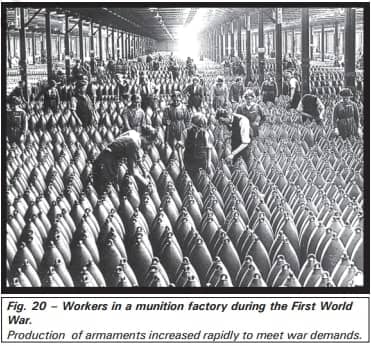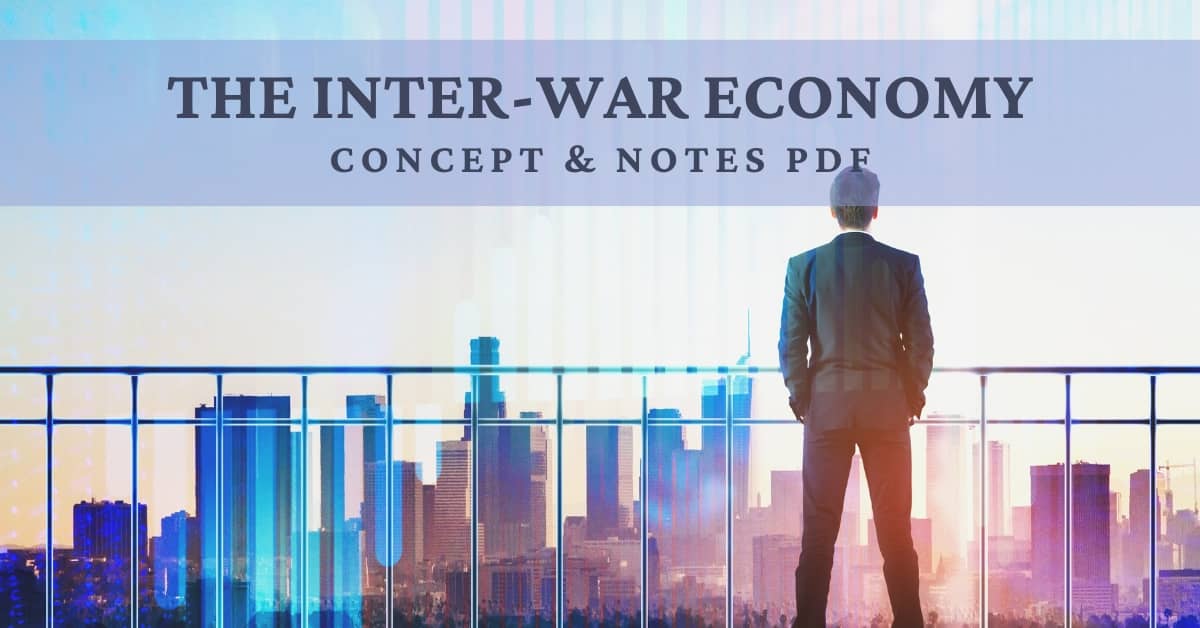The Inter-war Economy Concept & Notes PDF for Free
Topic & sub-topics covered: The Inter-war Economy, Wartime Transformations, Post-war Recovery, Rise of Mass Production and Consumption, The Great Depression, India and the Great Depression: The Making of a Global World (All single detail notes that are exam-oriented).
We have discussed in-depth and exam-oriented pointers that can be asked in the board exam of class 10th about “The Inter-war Economy, Wartime Transformations, Post-war Recovery, Rise of Mass Production and Consumption, The Great Depression, India and the Great Depression” which is taken from the NCERT History book for class 10th chapter no. 3 “The Making of a Global World“.
Download NCERT History Chapter 3 Class 10th Notes PDF for Free The Making of a Global World
If you are in class 10th and looking for free NCERT History chapter 3 notes of chapter The Making of a Global World class 10 that cover concepts, then From here you can download the free class 10th History chapter 3 notes “The Making of a Global World”. You should download this free PDF for future test or exam preparations.
NCERT History Chapter 3 The Making of Global World Class 10 Notes
The Inter-war Economy
1. Focus on the First World War:
- The First World War occurred from 1914 to 1918 and was primarily fought in Europe.
- Its impact, however, extended globally, shaping the course of the first half of the twentieth century.
2. Global Ramifications of the War:
- Despite being centred in Europe, the consequences of the war reverberated worldwide.
- The global fallout resulted in extensive economic and political instability.
3. Crisis in the Early Twentieth Century:
- The aftermath of the First World War led to a crisis that persisted for more than three decades.
- This crisis profoundly influenced the trajectory of world events during the first half of the twentieth century.
4. Widespread Economic Instability:
- Post-World War I, there was a widespread economic upheaval on a global scale.
- Nations faced economic challenges, contributing to the overall instability.
5. Political Instability:
- The aftermath of the war also triggered significant political instability worldwide.
- Changes in political landscapes and power dynamics were notable consequences.
6. Lead-up to Another Catastrophic War:
- The instability and unresolved issues from the First World War set the stage for another catastrophic conflict.
- The developments of this period laid the groundwork for the outbreak of the Second World War.
Understanding the impact of the First World War on a global scale, including economic and political repercussions, is crucial for comprehending the subsequent historical developments.
Wartime Transformations

1. Formation of Power Blocs:
- The First World War involved two major power blocs: Allies (Britain, France, Russia, and later the US) and Central Powers (Germany, Austria-Hungary, Ottoman Turkey).
- Initially, many believed the war would be short-lived, but it extended for over four years.
2. Nature of the First World War:
- It was the first modern industrial war, featuring the world’s leading industrial nations.
- Modern industrial capabilities were harnessed, leading to unprecedented destruction.
3. Technological Advancements in Warfare:
- The war introduced modern technologies on a massive scale, including machine guns, tanks, aircraft, and chemical weapons.
- These technological advancements were products of large-scale industrial production.
4. Enormous Human Cost:
- The scale of death and destruction was unprecedented, with 9 million dead and 20 million injured.
- Most casualties were men of working age, impacting the able-bodied workforce in Europe.
5. Impact on Workforce and Household Incomes:
- Deaths and injuries during the war reduced the able-bodied workforce in Europe.
- With fewer workers, household incomes declined after the war.
6. Societal Changes during the War:
- Industries were restructured to focus on war-related production during the conflict.
- Societal roles underwent a transformation, with women taking on jobs traditionally held by men.
7. Economic Change and Borrowing:
- Economic links between major powers were severed during the war.
- To finance the war effort, Britain borrowed substantial sums from US banks and the public.
8. US Transformation into International Creditor:
- The war transformed the US from an international debtor to an international creditor.
- By the war’s end, the US and its citizens owned more overseas assets than foreign entities owned in the US.
Understanding the geopolitical dynamics, technological advancements, and the socio-economic impact of the First World War is crucial for a comprehensive grasp of this historical period.


